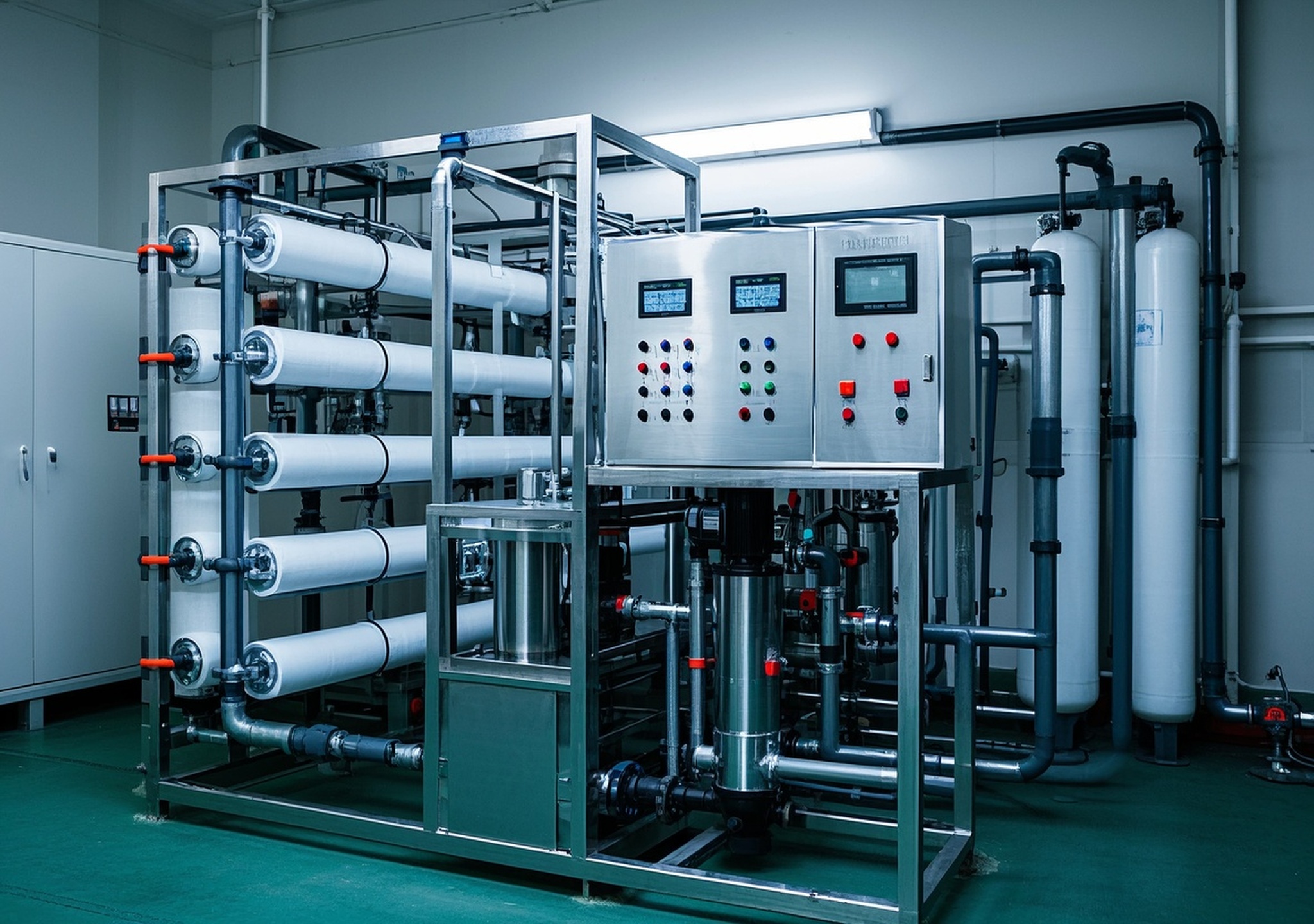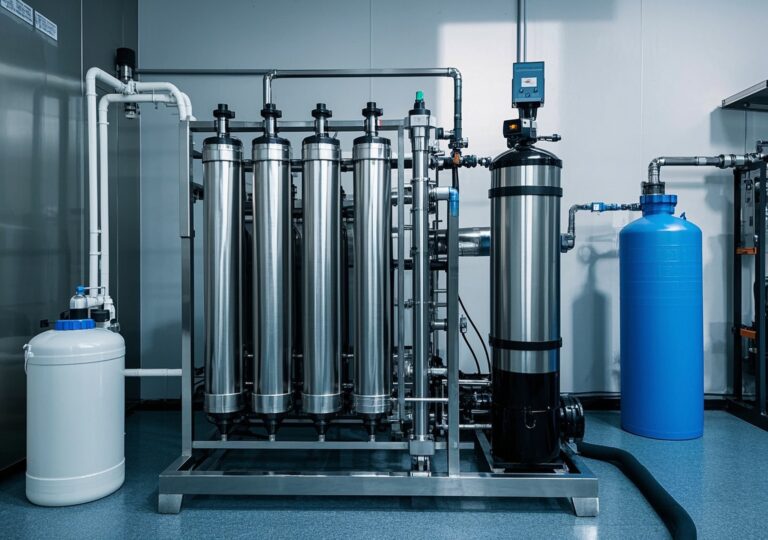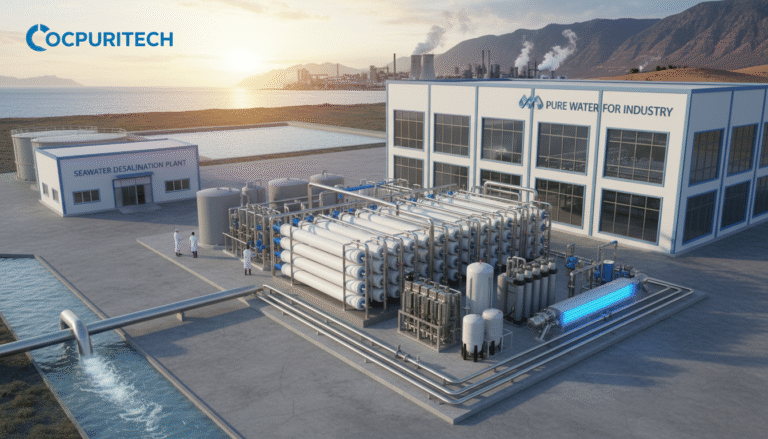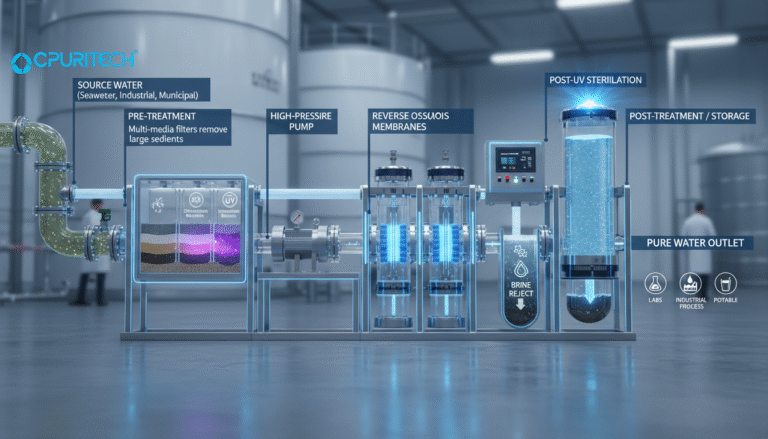Must-Read: Integrating water treatment plants into Modern Systems

Integrating Water Treatment Plants into Modern Systems: A Comprehensive Guide to Commercial Reverse Osmosis Solutions
1. Introduction: The Vital Role of Commercial Reverse Osmosis Systems
In today’s industrial landscape, reliable and efficient water purification is critical. Water treatment plants, especially commercial reverse osmosis (RO) systems, have become indispensable for a wide array of sectors—from food processing to pharmaceuticals. These systems offer advanced filtration capabilities that address increasing water-quality demands and stringent regulatory standards. Their role extends beyond mere purification; they are strategic assets enabling sustainability, operational efficiency, and compliance in modern industrial processes.
The global water treatment market is projected to nearly double from $74.6 billion in 2025 to $146.8 billion by 2035, growing at a CAGR of 7.0%. Within this market, RO technologies dominate with a 29% share, underscoring their paramount importance and adaptability across various water sources and contaminants. Commercial buildings will lead demand, accounting for 50% of the market share by 2025, signaling growing corporate investment in advanced water treatment infrastructure (Future Market Insights, 2025).
2. Equipment Overview and Performance Advantages
Commercial reverse osmosis plants utilize semi-permeable membranes to remove dissolved solids, bacteria, and organic compounds with removal efficiencies exceeding 99%. Key performance indicators include treatment capacity (commonly ranging from 1,000 to over 100,000 gallons per day for business-scale plants), recovery rate, and energy consumption.
The versatility of these systems makes them suitable across industries requiring water purity for manufacturing, cooling, or direct consumption. High-pressure pumps and automated controls ensure consistent flow and optimize operational efficiency, reducing downtime and maintenance costs.
| Parameter | Typical Range | Performance Highlight |
|---|---|---|
| Treatment Capacity | 1,000 – 100,000+ GPD | Scalable to customer demand |
| Salt Rejection Rate | 98% – 99.9% | Ensures superior water quality |
| Recovery Rate | 60% – 85% | Efficient water utilization |
| Power Consumption | 1 – 3 kWh/m³ | Optimized for energy savings |
3. Process Workflow of Commercial RO Systems
The operation of an RO water treatment plant is typically divided into several sequential stages designed to maximize efficiency and water quality:
- Pre-treatment: Removal of suspended solids and chlorine via multimedia and activated carbon filters to protect membranes from fouling and chemical damage.
- Softening and Anti-Scaling: Ion exchange softeners mitigate hardness ions that cause scale buildup.
- High-Pressure Pumping: Pressurizes water to appropriate levels (typically 200-800 psi) to drive flow through membranes.
- RO Membrane Filtration: The core purification stage where dissolved impurities are removed.
- Post-treatment: Includes pH adjustment, UV sterilization, or mixed-bed deionization to tailor water for specific industrial requirements.
Process Flow Diagram:
| Feed Water | Pre-Treatment Filters | Softener | High-Pressure Pump | RO Membrane | Post-Treatment | Product Water |
| Raw Industrial Water | Multimedia & Activated Carbon Filters | Ion Exchange Softener | Boosting Pressurized Flow | Semi-permeable Membrane Module | UV Sterilization, pH Adjustment | Clean, Purified Water |
4. Key Components: Functionality and Technical Features
Multimedia Filter
This component removes suspended solids and particulate matter. Typically layered with sand, anthracite, and garnet, it ensures turbidity reduction, extending the life of downstream components.
Activated Carbon Filter
Responsible for eliminating free chlorine, organic compounds, and odors that could degrade membrane performance. It improves taste and prevents membrane oxidation.
Water Softener
Softens feed water by exchanging hardness ions (calcium, magnesium) with sodium ions, preventing scale buildup on membranes and critical piping.
High-Pressure Pump
Enables sufficient hydraulic pressure for water to permeate through RO membranes efficiently. Modern pumps are engineered for high energy efficiency and reliability, reducing operational costs.
RO Membranes
The heart of the system, made from thin-film composite (TFC) or cellulose acetate materials. These membranes are designed for high permeability and selectivity, rejecting dissolved salts, bacteria, and organics.
5. Membrane Characteristics and Maintenance Best Practices
Membrane choice depends on feed water quality and desired output. TFC membranes offer high flux and salt rejection but require strict pre-treatment to avoid fouling. Cellulose acetate membranes are more chlorine tolerant but less permeable.
Maintenance involves regular chemical cleaning to remove scaling, biofouling, and organic deposits. A proper schedule typically includes monthly flushes and annual membrane replacements based on pressure differential monitoring and permeate quality analysis.
Adhering to manufacturer recommendations and operational best practices extends membrane lifespan beyond 3-5 years, optimizing cost-effectiveness.
6. Post-Treatment Technologies for Enhanced Water Quality
Post-treatment ensures the water meets stringent industry-specific criteria:
- Mixed Bed Deionization: Polishes water by removing residual ions for ultra-pure applications.
- Electrodeionization (EDI): Combines ion exchange resins and electrical current to continuously remove ions without chemical regenerants.
- Ultraviolet (UV) Sterilization: Provides biological disinfection, destroying bacteria and viruses to ensure microbiological safety.
7. Industry Applications: Case Studies
Food & Beverage: In a beverage bottling plant I consulted for, integrating a commercial RO system reduced total dissolved solids by 98%, significantly improving product taste consistency and reducing production downtime caused by scaling. The ROI was achieved within 18 months due to reduced chemical cleaning and maintenance costs.
Pharmaceutical Manufacturing: Another project in a cleanroom facility employed a multilayer water treatment system including RO and mixed-bed deionization, producing ultrapure water compliant with USP standards. This enhanced product quality enabled FDA approval with no delays.
Hospitality Sector: I observed hotels leveraging commercial RO plants to meet stringent drinking water guidelines. These systems reduced mineral content and eliminated pathogens, enhancing guest satisfaction and lowering bottled water procurement costs.
8. Pricing Influencing Factors and Investment Considerations
The cost of commercial RO water treatment plants varies widely based on several main factors:
- Component Quality: High-grade membranes and pumps increase upfront cost but reduce lifecycle expenses.
- Customization: Systems tailored for specific water chemistries or capacities cost more but improve long-term reliability.
- Operational Costs: Energy consumption, membrane replacement frequency, and labor affect total cost of ownership.
- Financing & Warranty: Access to leasing, extended warranties, and service contracts can affect budgeting and risk management.
Evaluating these components holistically helps businesses optimize capital utilization and operational efficiency.
9. Installation and After-Sales Service Assurance
Successful implementation requires comprehensive site surveys and preparations including power, plumbing, and pre-treatment assessment. Professional installation teams perform commissioning and calibrate control systems to ensure operational stability.
Post-installation, ongoing training empowers staff in routine operation and troubleshooting. Reliable suppliers provide remote monitoring support and preventative maintenance to extend system longevity and minimize unexpected downtime.
10. Maintenance and Troubleshooting Guidance
Routine maintenance is critical to sustaining performance. Key practices include:
- Regular inspection of pre-filters and media beds for clogging or degradation.
- Scheduled chemical cleaning of membranes using appropriate agents targeting scaling and biofilm.
- Monitoring feedwater parameters and system pressures to detect early signs of fouling or leaks.
- Maintaining an inventory of critical spare parts such as membranes, seals, and pumps to reduce response time.
Understanding common faults—like pressure drops, permeate quality decline, or pump failure—helps troubleshoot effectively, minimizing operational disruptions.
11. Manufacturers and Market Positioning
Leading manufacturers of commercial RO plants emphasize innovation, quality assurance, and global certification compliance (such as ISO and NSF). Their market strategies involve modular designs for scalability and integration with smart monitoring systems. Many target regional markets with tailored solutions addressing local water challenges and regulatory norms, reinforcing their industry reputation.
12. Conclusion: Choosing the Right Commercial RO Water Treatment Plant
Selecting an optimal water treatment plant hinges on understanding specific water quality needs, operational demands, and total cost considerations. Commercial reverse osmosis systems stand out for their proven ability to deliver consistent, high-purity water across diverse industrial contexts.
By integrating advanced pre-treatment, membrane technology, and post-treatment processes, these systems ensure regulatory compliance, operational efficiency, and sustainability. Coupled with professional installation and ongoing maintenance, they represent a sound investment for modern businesses confronting water management challenges.
For industries seeking reliable and scalable water purification solutions, engaging with trusted system providers and leveraging expert insights will drive success and resilience in an evolving market landscape.
References:
- Future Market Insights, Water Treatment Market Analysis – Size, Growth and Forecast 2025 to 2035, published September 16, 2025.
- Future Market Insights, Reverse Osmosis Pump Market Report – Demand, Trends & Industry Forecast 2025 to 2035, published June 16, 2025.




